
CIMRM 653 - Mithraeum of the Madonna del Parto. Sutri, Italy.
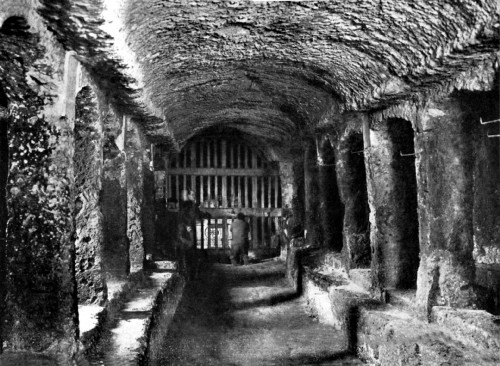
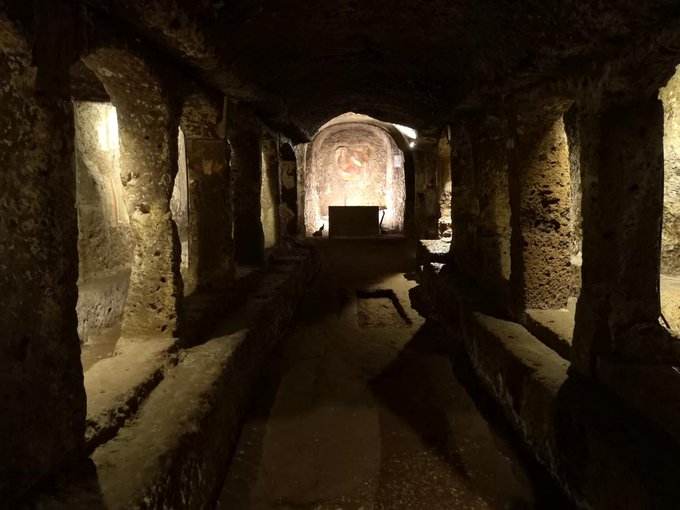
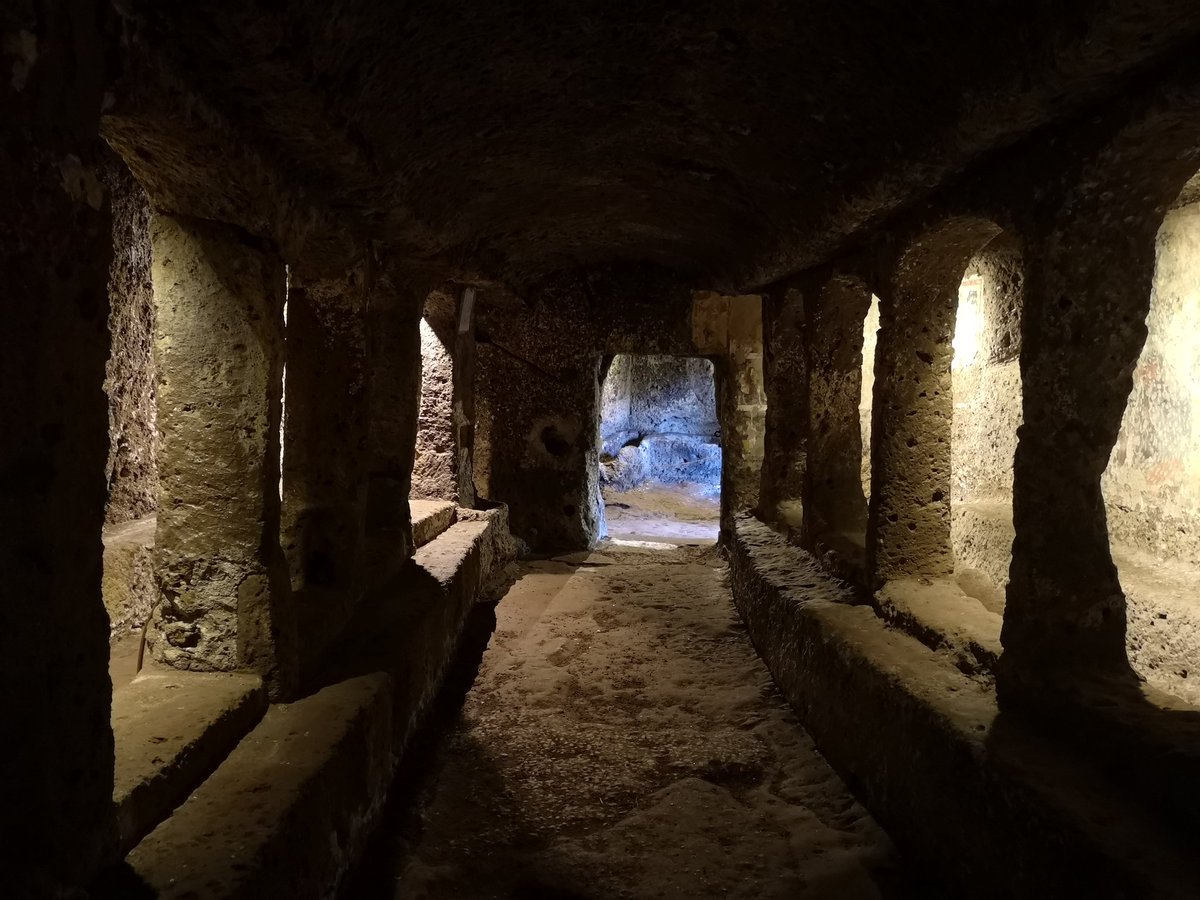
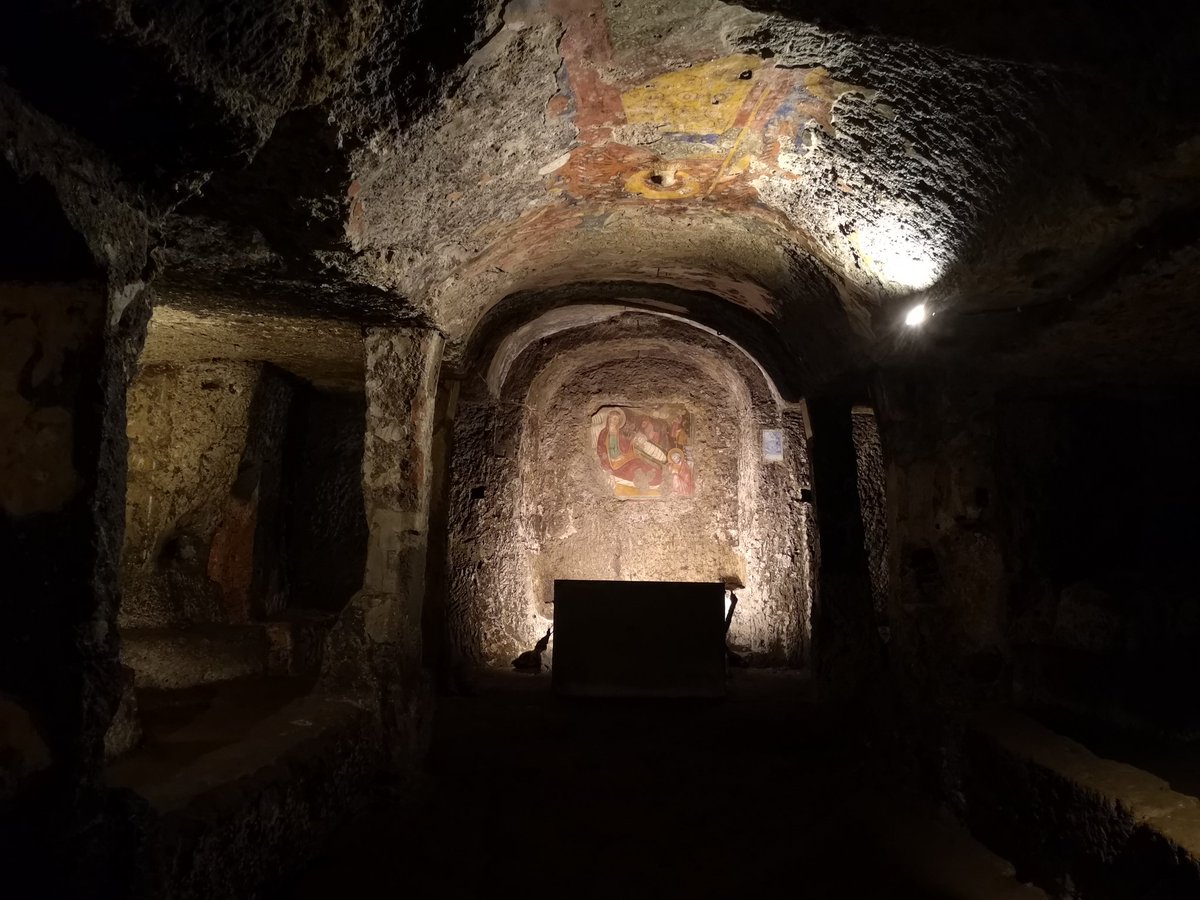
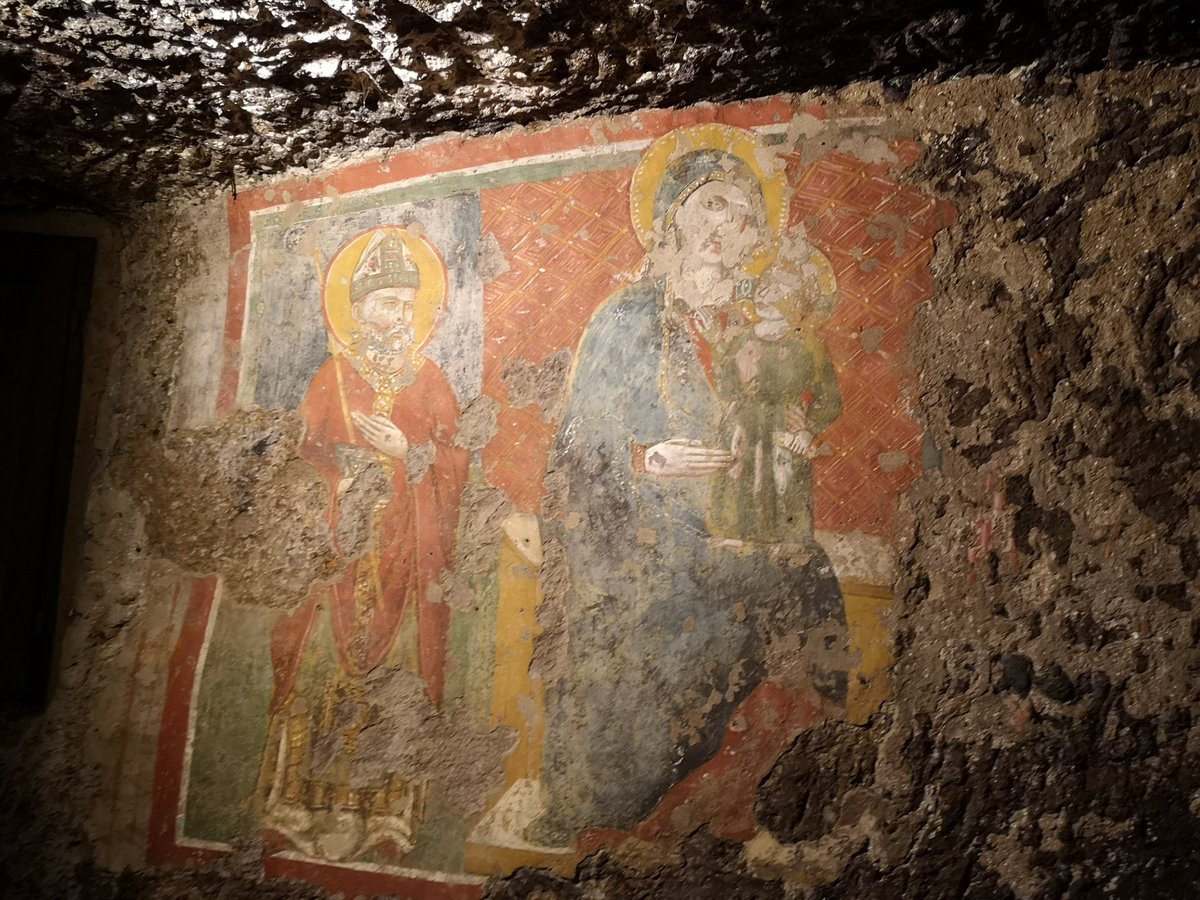
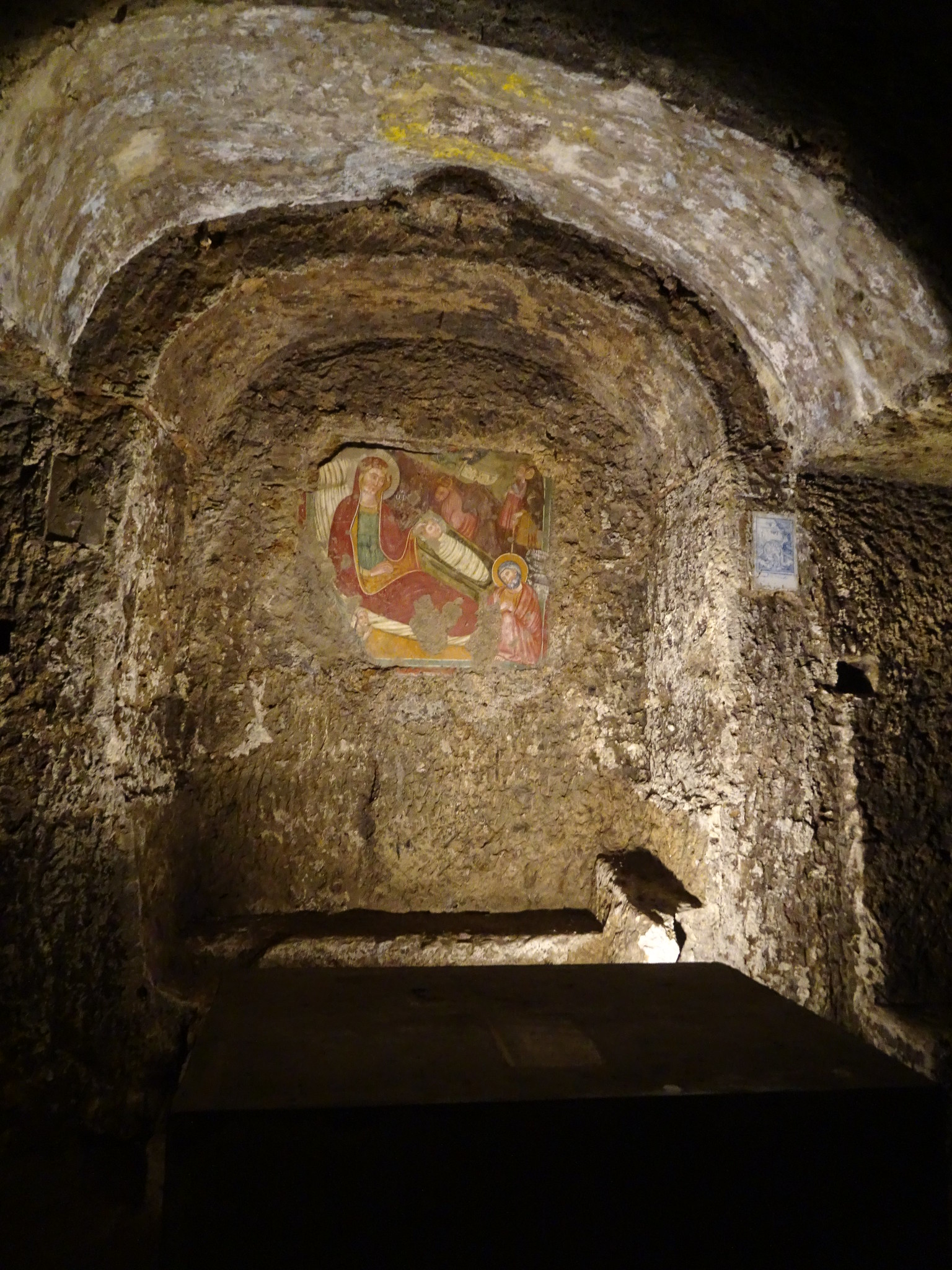
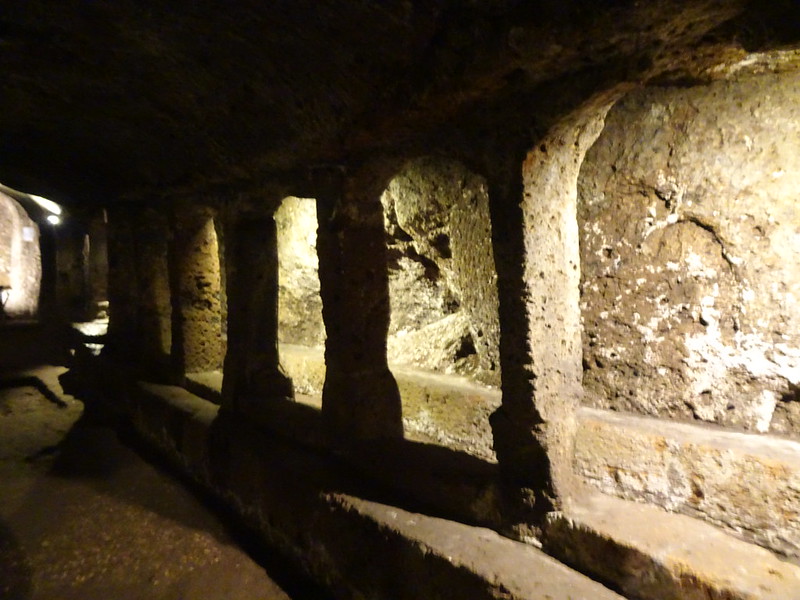
The Mithraeum was converted into a church in the 13th century.
CIMRM entry
SUTRIUM
653.
At Sutri, in the same rocky hill in which the Roman Theatre has been built, there is the Madonna del Parto's church. From its structure it becomes clear that this originally must have been a Mithraeum.
Frothingham in AJA 1889,320ff; Sestieri in BCR 1934, 33ff and fig.; Cumont, Mithra en Etrurie, 97ff and Tav. XI, I, with fig. 1 (see fig. 182).
The present atrium of the church certainly served for a pronaos in the original Mithraeum. By it one enters the proper, orientated sanctuary (L. 21.20 Br. 6.70), which is sparsely illuminated by three windows in the leftside-wall. Two rows of ten columns, resting on one uninterrupted base, support the vault above the central aisle (Br. 2.47). The side-aisles however, have flat roofs.
The sanctuary has thus the usual division into a central aisle and two sidebenches, the construction of which are still easily discernable. For there are two elevations (H. 0.50 Br. 0.30) running along the bases (a, b) of the columns and two other elevations run along the side-walls. There is nowadays a narrow corridor (Br. 0.75) along side the latter elevations (c, d) and the bases of the columns; but they certainly formed one whole.
The floor of the central aisle slopes upwards to the choir, broadening considerably and beginning at the end of the podia. In the back-wall there is a niche with a fresco of the H. Virgin but which originally must have contained the relief of Mithras tauroctone. This niche is accessible via three steps. Remarkable is that in elevation c a square basin is still visible. A brook, running in the immediate vicinity, supplied it with the required water.
Links.
| Tweet |